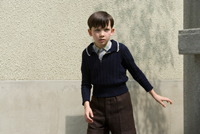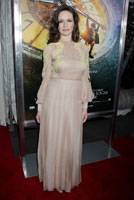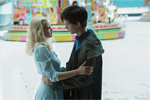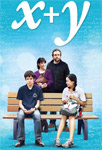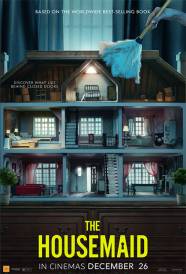Asa Butterfield The Space Between Us
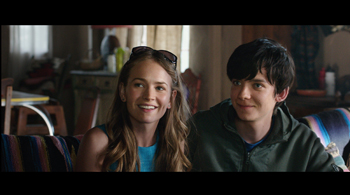
Asa Butterfield The Space Between Us
Cast: Gary Oldman, Britt Robertson, Carla Gugino, Asa Butterfield
Director: Peter Chelsom
Genre: Sci-Fi
Rated: M
Running Time: 120 minutes
Synopsis: A baby's heart will beat 54 million times before birth. An adult's heart will beat 24.5 million times during the journey from Earth to Mars. In STX Entertainment's 'The Space Between Us," a star-crossed modern love story about two teens from different worlds we learn that the human heart has no boundaries.
Gardner Elliot, the first human born on Mars, is secretly raised in an experimental colony after his astronaut mother dies during childbirth. Sixteen years later, Gardner begins an online romance with a girl in Colorado and engineers a plan to travel across the solar system to meet her. Now, on the run, with Earth's gravity threatening his very existence, Gardner must race against time and nature to find his love and win her heart. Once united, the two teens run from the enigmatic billionaire who funded the original expedition to Mars, in hopes of uncovering information about Gardner's mother and the mysterious circumstances surrounding how Gardner came into existence.
In this interplanetary adventure, shortly after arriving to help colonize Mars, an astronaut dies while giving birth to the first human born on the red planet – never revealing who the father is. Thus begins the extraordinary life of Gardner Elliot – an inquisitive, highly intelligent boy who reaches the age of 16 having only met 14 people in his very unconventional upbringing. While searching for clues about his father, and the home planet he's never known, Gardner begins a unique and secret inter-planetary friendship with a foster girl named Tulsa.
When he finally gets a chance to go to Earth, Gardner is eager to experience all of the wonders he could only read and hear about on Mars. But after his explorations begin, scientists discover that Gardner's organs can't withstand Earth's gravity. Gardner joins with Tulsa on a race against time to unravel the mysteries of how he came to be, and where he belongs in the universe.
The Space Between Us
Release Date: March 2nd, 2017
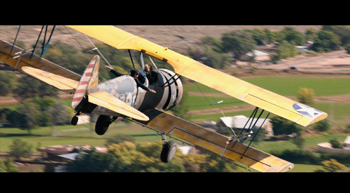 About The Production
About The Production
Behind The Story
From Plato to Shakespeare to Thoreau the human need to connect has consumed, perplexed, and vexed philosophers since the beginning of literature. And it continues with their modern counterparts such as Lin Manuel Miranda and Margaret Atwood. From Manuel's -Love is love is love," Hamilton acceptance speech to Atwood's disturbing portraits of love in a post-apocalyptic dystopia – love prevails. It bats last. This condition is the basis for 'The Space Between Us" which began with a simple provocative premise: How far will we travel for a real human connection?
Award-winning television editor and writer Stewart Schill was intrigued by the question and presented it to producer Richard Barton Lewis of Southpaw Entertainment back in 2006 after Richard Barton Lewis had optioned another of Stewart Schill's screenplays, 'Splashdown," that featured the story of an astronaut returning to Earth and trying to fit back into society. At the time, Richard Barton Lewis was working on the film 'August Rush" about an orphaned boy in search of his parents. 'We just started talking about his new idea and worked up part of a story, which was about a female astronaut that gets pregnant and dies in childbirth, and the child grows up in secrecy on Mars," says Richard Barton Lewis, who has produced films such blockbuster films as 'Backdraft," 'Robin Hood: Prince of Thieves," and 'August Rush", and has served as Executive Producer on the popular genre TV series 'The Outer Limits" and 'Poltergeist: The Legacy." Richard Barton Lewis says the project immediately clicked for him, partly out of the combination of -Stewart Schill's obsession with space travel, and his own son's interest in outer space. 'There were similar themes," Richard Barton Lewis notes. ''The Space Between Us' is kind of -August Rush' on steroids.'"
Together, Richard Barton Lewis and Stewart Schill began writing a treatment that infused the born-on-Mars concept with the overall theme of what it means to be human. Richard Barton Lewis says their story followed 'the journey of this boy who comes to Earth and just wants to be human like everybody else, and then his body starts to fail." Richard Barton Lewis had an initial telephone consultation with a researcher in NASA's space program to get input and insight into what would happen if a female astronaut were pregnant in space. 'There was a big pause on the end of the call and the NASA scientist he said, -have you been listening to our phone calls?' I said -no, this is the first time we've ever spoken!" They said -it's going to happen and we just don't know what to do. We're not prepared to have a woman give birth in space. Zero gravity's impact on an embryo over nine months; God knows what's going happen. The child could be ten feet tall.'" Richard Barton Lewis knew he was onto something. He remembers, 'It was getting better and better!"
With a completed treatment that he felt could be the basis for a compelling film, Richard Barton Lewis enlisted prolific screenwriter Allan Loeb to explore the idea further and create a screenplay fleshed out with more fully realised characters. 'When Richard Barton Lewis pitched me the two minute version of the story I immediately said -I'm in'," Loeb recalls. The screenwriter, best known for his screenplays for the films 'Wall Street: Money Never Sleeps" and '21," and 'The Only Living Boy In New York", remembered thinking 'This is huge! It's emotional. It's science-fiction but it's human. It was a thrilling premise for a movie."
With Allan Loeb on board a story began to take shape that would depict the wonder, adventure, and excitement of life on Earth through Gardner's childlike, innocent perspective as someone experiencing it for the first time. During his adventure he discovers what it really means to be human and find an emotional connection in the world.
Loeb says that he and Richard Barton Lewis worked closely together for a very long time in the development of the script. 'Richard Barton Lewis was very attached to the science and wanted to make it as close to reality as possible, which I'm all for, but I needed to also capture that at the core of Gardner's journey is the story of a young man learning what it's like to be human," says Allan Loeb, who began writing the script in 2007. 'It was an interesting and constant debate throughout the development about how true you are to the science and how much poetic license you can take." Richard Barton Lewis points out, 'I was the yin to his yang. At first Allan Loeb only cared about character. He wanted the emotion. He wanted the journey for the boy and the longing to find his parents. But I had Executive Produced -The Outer Limits' for seven seasons so I was really steeped in the science credibility of it. It was a great combination of skill sets where I would bring the science and the grounded reality to it, and he would bring the strength and nuance of character."
Richard Barton Lewis and Allan Loeb consulted with scientists, NASA personnel, and other medical experts to infuse authenticity into the near-future set film, especially regarding the physical and biological issues Gardner faces once he gets back to Earth and its different gravity. Richard Barton Lewis says that as he comes from a family of doctors and medical professors, 'it was important that the science in the story be realistic."
After a number of years in development, Richard Barton Lewis met with British director Peter Chelsom, who had recently completed the film 'Hector and the Search for Happiness." Peter Chelsom, the writer-director of whimsical films such as 'Serendipity" and 'Shall We Dance?" is known for films featuring quirky characters and a wistful sensibility. He is also known for maintaining a strong working relationship with his actors, having been one himself early in his career. 'I thought -Hector and the Search for Happiness' was a spellbindingly heartfelt film," Richard Barton Lewis recalls. 'It was a road trip. It was an adult searching for his place in the world, and what the meaning of happiness is. It was a very simple concept, beautifully executed that had a wonderful balance of humour, pathos and great performances." From the tone and style depicted in that and Peter Chelsom's other films, Richard Barton Lewis was convinced that he would be the right person to translate the script to screen.
Luckily, Peter Chelsom loved the script and although he had never directed a film that embodied elements of science fiction, he connected with the core story of a boy trying to find his place in the world. Peter Chelsom identified with Gardner's longing. 'Every teenager feels at one time or another that they are from another planet. But Gardner really is from another planet and it was fun to play with that on both an emotional and visual level." He joined forces with Allan Loeb and Richard Barton Lewis and together they continued working on the script to bring Gardner's journey to life. 'I felt in Peter Chelsom's work a humanity, a positivity, and a willingness to take a character on a journey," Richard Barton Lewis says of the director. 'He's a very gifted filmmaker, very specific in design, visuals and storytelling. But what he connected with in the story was about what it means to be human and how we connect or disconnect. He found even more of the humanity in the story than perhaps was on the page, which is what you hope for a director – to take a piece of material and elevate it."
'There's a lot that Peter Chelsom brought to the film that wasn't on the page," screenwriter Allan Loeb agrees. 'Peter Chelsom has a sense of humour that I think really translates into the picture. The other great thing he brings is the emotional core. This isn't just a love story set in space, or an epic space adventure, it's a true coming of age story about the longing for human connection, that just happens to have Mars as a backdrop. And Peter Chelsom inherently got that."
Allan Loeb explains that 'You have a huge canvas about Mars and Earth and this story of the loneliest boy in the universe. He's raised on Mars and only spends time with scientists, and the isolation of seeing Earth outside his window and to know everything that is happening there is probably the most horrifying and the loneliest thing you can imagine."
The driving force of the story, Loeb explains, is what happens to Gardner after he travels the 144 million miles back to Earth. 'He has all these expectations and presumptions of what it's like to be on Earth, and he learns that the reality is much different than how he thought it would be, which is a journey we all end up going through. He doesn't realise that people can be tough, and the girl he likes may be wounded and damaged and feel unloved. So it's that harsh reality. It's a coming of age story, and I think great coming of age stories are about replacing idealism with reality, and that's Gardner's journey, but with him it's a little heightened because he is technically an alien experiencing Earth for the first time."
According to both Richard Barton Lewis and Allan Loeb – who cite inspirations as diverse as 'E.T. the Extra-Terrestrial," 'Being There," 'August Rush," 'Wings of Desire," 'The Fault in Our Stars" and Shakespeare's Romeo and Juliet - all the characters are searching for something in the movie. 'Gardner has to travel a long distance to learn what it means to be human and I think in a nutshell that is the core of Gardner's journey and the major theme of the movie," Allan Loeb says. 'I also think there's a central love story that young people can really connect to but that will appeal to everybody. Audiences can expect an emotional journey, a cool science fiction movie that has real heart to it, some humour and a little bit of exciting, young love." Richard Barton Lewis agrees: 'It's a universal tale that's very relatable. It's about a loss of innocence, relationships, sacrifice, and a desire to fit in. It's an emotional journey for all four characters. But on top of that we have this epic landscape and an action picture with rockets and planes and helicopters." Says Peter Chelsom, 'with all of my films, whether I'm writing or directing, I try to get the theme down to a sentence. In this case it was a film about connection vs. isolation, amplified by the vastness of space."
Casting The Film
When the producers began casting the film, they already had one person in mind for the principal character of Gardner. In fact, he had been their choice for years. 'I had seen the movie -Hugo' that Martin Scorsese directed and Asa Butterfield was spectacular in it," Richard Barton Lewis says of the 2014 drama. 'He had a sense of wonder and otherworldliness – he felt timeless. There's almost an old soul about him." Even though Ava Butterfield was only 14 years old at the time of 'Hugo," Richard Barton Lewis knew that the young British actor was perfect to take on the role of 16-year-old Gardner Elliot, who spends those first sixteen years growing up in the sterile environment of a Mars science station before his dramatic return to Earth. 'He's always been the one I wanted to cast for the role so I'm just thrilled," Richard Barton Lewis says. Since the time he first saw him, in addition to being four years older Asa Butterfield has grown from five feet tall to six one. Peter Chelsom was in agreement. 'Asa Butterfield has the exact combination of intelligence, purity and innocence," says Peter Chelsom. 'His simple gaze is disarming in itself. He's like a lie detector."
Asa Butterfield says that as an actor he's always on the lookout for originality and characters that will challenge him and give him an opportunity to do something different. 'Because Gardner is so inexperienced in the real world I thought it would be an interesting role to try and convey that kind of feeling," the young actor says. Asa Butterfield recalls that when he first read the script he was instantly intrigued with Gardner and his core traits of optimism and his naiveté, as well as the theme of Gardner's sense of belonging.
A fan of science fiction, the young British actor, who has previously starred in films such as 'Ender's Game" and 'The Boy in the Striped Pajamas," expresses that he was compelled by the story of this boy born on Mars and his journey to find his humanity. 'Gardner has lived his whole life on Mars so he's had a limited experience of the outside world. Pretty much everything he knows is what happens on Mars, and the few snippets of information that he gathers about Earth become the things he loves and craves. His whole world revolves around this idea of getting to Earth, finding his father, and finding Tulsa."
Having never developed the ego or self-consciousness that comes with growing up in a structured society, Gardner possesses a childlike wisdom, is extremely intelligent, and completely honest. Since he grew up 144 million miles from Earth, once he returns, the lanky, alert, techno-geek retains a unique innocence much different than a teenager's typical social behaviour. He can be blunt and disarming and without an understanding of typical human traits like sarcasm. 'Growing up on Mars he doesn't have the normal social interactions," Richard Barton Lewis explains. 'He's just been around scientists and adults; only a handful of people have ever seen him. He has encyclopedic knowledge of what they've given him, he's seen a random selection of movies, but they've filtered everything. So he's yearning to have information like anyone who's sixteen. He has this otherworld quality for a reason: he actually comes from another world, and even though he's genetically human, he doesn't have a clue how to fit in here."
While on Mars, Gardner's only communications with Earth is from his clandestine online chats with Tulsa, a young high school girl in Colorado, whom he vows to visit when he has a chance. 'Like any young people they find each other," Richard Barton Lewis explains. 'They're both lonely and they're both looking for a connection, which is what this movie is about." 'It's as if they're united in being two different versions of outcasts," Peter Chelsom adds.
'It's such a great story, following these people who are all outsiders trying to find their drive and purpose," Asa Butterfield continues. 'Once he gets to Earth and sneaks out of the NASA facility he goes to find Tulsa and they go on a road trip to find his dad. So there's a bit of mystery and some detective work, and at the same time it's a coming of age experience."
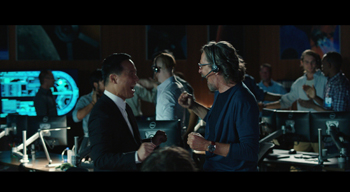 While on Earth, Gardner begins to succumb to the physical challenges from dealing with Earth's gravity. 'Earth has two thirds more gravity than Mars, so physically just walking is hard," explains Richard Barton Lewis, who worked closely with NASA scientists to make sure the science of the film was authentic. 'Breathing is difficult. Getting your heart to function is hard, because your heart now needs to pump twice as hard to get your blood flowing and to get oxygen into your lungs. So he's struggling." Richard Barton Lewis says that Gardner is a single-minded young boy and doesn't want to hear about the realities of Earth's challenges.
While on Earth, Gardner begins to succumb to the physical challenges from dealing with Earth's gravity. 'Earth has two thirds more gravity than Mars, so physically just walking is hard," explains Richard Barton Lewis, who worked closely with NASA scientists to make sure the science of the film was authentic. 'Breathing is difficult. Getting your heart to function is hard, because your heart now needs to pump twice as hard to get your blood flowing and to get oxygen into your lungs. So he's struggling." Richard Barton Lewis says that Gardner is a single-minded young boy and doesn't want to hear about the realities of Earth's challenges.
In addition to the physical afflictions brought on by Earth's gravity, Gardner also has social issues. 'His whole experience of social interaction is so limited he has no idea what to do in certain situations," Asa Butterfield says. 'He doesn't read social cues and he doesn't understand sarcasm, which comes across as pretty funny in the film and was quite fun to play." As Richard Barton Lewis explains, 'Here's a kid who's never seen the sun so bright, has never seen an ocean. He's never seen animals, or cars, or people his own age. So this is the archetypal fish out of water story, and that's what the journey's about; finding out what it means to be human. He's fantasized what he thinks Earth is going to be like, and it's not. Some of it is like what he imagines, and some of it is totally different."
Peter Chelsom likes to rehearse his actors. 'It's never about bringing it to the boil: it has to be its best at the moment the camera rolls. But there is so much great layering that comes out of rehearsal. The cast here totally embraced it. In Asa Butterfield's case, I put him through the experience of feeling uncomfortably heavy by strapping some serious weights to his body, having him walk, run, struggle etc. By the time those scenes came up for shooting, there was a kind of -muscle memory' that just kicked in and looked very convincing. Of course, we had to chart a gradual -acclimatizing' of Gardner, so that he slowly adapted and looked to be walking and running like any other human."
Britt Robertson
The other half of the pair of star-crossed lovers is Tulsa, a beautiful and edgy 17-year old high school student from a small town in Colorado, played by Britt Robertson. Britt Robertson, who co-starred with George Clooney in 'Tomorrowland" and Scott Eastwood in 'The Longest Ride," plays the cynical, fiercely independent foster child who goes from one foster home to another longing for the moment she turns 18 and can escape. Yet under that tough exterior is someone who wants a family who will care for her. When Britt Robertson first read the script out loud, the character and the dialogue really resonated with her. 'It sounds a lot like how I speak," she confesses, 'just in terms of energy, messing around with people, and being sarcastic. I thought it was really interesting and just loved the arc that Tulsa has throughout the film and knew there would be plenty to explore."
'We looked at a range of young actresses to play the character and then I saw -Tomorrowland' and thought, wow!," Richard Barton Lewis enthuses. 'This is a young girl beyond her years with a real strength of character: feisty, stubborn, opinionated. These were all the things we wanted in Tulsa. And then Britt gave a reading that was extraordinary. It just moved us all."
'Tulsa is a tough chick," the actress says. 'When you first meet her, she has no one. The only person she really has is this kid Gardner that she knows from online messaging. So there's not a whole lot of connection that she has in her life outside of her foster dad who's just a wreck. She's a little defensive, she's a little aggressive and she doesn't trust anybody. And her exterior matches the inside a little bit. She's got her leather jacket and all, but she's a more vulnerable than you realise."
For Britt Robertson, the film's theme of human connection was a big attraction to her. 'It's about figuring out who you want to be, and the type of person you want to be for those people around you and even for yourself. It's this sort of unconventional family of sorts all trying to figure out who we are."
'The biggest thing that stood out to me is that there are so many worlds, and so many different types of characters, and yet they all connect in this really beautiful way," she continues. 'They're all displaced in some way, shape, or form. I just love the emotional impact that it carries but also the action and fun and the mystery."
Tulsa and Gardner, who both share the trait of being outsiders searching for family, love, and a place where they belong, first meet in an online chat room. Tulsa is in Colorado and, unbeknownst to her, Gardner is on Mars. 'Tulsa is someone who is searching for a connection, and for her a safe place is on her computer," Britt Robertson says. 'She's not the type of girl who is going to invest emotionally in someone she meets in person, she just hasn't gotten to that point in her life where she feels comfortable doing that. So Gardner feels really safe to her, and she can confide in him." That relationship builds and grows online and then they finally meet for the first time in person and Tulsa decides to go on this journey with him. 'He represents hope," she adds.
Once Peter Chelsom and Richard Barton Lewis saw Britt Robertson and Asa Butterfield in rehearsals, they instinctively detected the chemistry between them. 'Physically, intellectually, and emotionally," Richard Barton Lewis describes, 'it felt very real." Of her co-star, Britt Robertson couldn't imagine anyone else in the role. 'I love Asa Butterfield, he's so perfect," she enthuses. 'His presence, his demeanor, and his disposition with how he plays Gardner. And he also balances me in this really beautiful way.
He's so different from my character that we had a blast playing against each other. He's just a kind soul and I couldn't ask for anyone better." Richard Barton Lewis notes that the big height difference between Britt Robertson and Asa Butterfield created some funny moments for their characters. 'She's five foot three and he's six one, so that also gives them this odd dynamic. When they first meet she says, -you're taller than I thought you'd be' and he says -you're meaner than I thought you'd be.' So they have this start in a classic Hepburn/Tracy kind of way, totally at odds."
Peter Chelsom is known for often casting his actors 'close to home", as he puts it. 'When an actor is really well cast, you can kind of celebrate the fact by letting them play larger parts of themselves. You enjoy the common traits between the actor and his/her role. It becomes more personal. Asa Butterfield and Britt Robertson are well cast here: their natural rhythms and energy are so right. What I found most interesting was their arc, how Tulsa was disarmed by Asa Butterfield, largely because he is just not as combative as anyone she might have met in her life. And yet he is strong. By the end of the story, they really have grown into each other. '
Once their friendship turns into romance, Tulsa helps Gardner connect with his human side, while Gardner gives Tulsa the kind of love and acceptance she's never found while bouncing from home to home. 'It's a love story between two people who feel like they're outcasts," Richard Barton Lewis says. 'They're opposites, but they're really connected and I think that's a universal story. It's a very simple story of relationships, of trying to fit in against this massive canvas." In her early talks with Peter Chelsom, the 25-year old North Carolina native learned that he was expecting a lot from her character, notably that she'd have to master some new skills for the role, one of them particularly nerve-wracking. 'He wanted me to be tough – I had to beat up a bunch of big dudes - he wanted me to be able to ride a motorbike, to play the piano, and finally to sing, which I don't do at all," she recalls. 'I've always promised myself that I would never take a role where I had to sing, but it's good to force yourself into these uncomfortable situations and learn new skills. I was happy to be doing it, but it was terrifying."
Prior to filming, Britt Robertson took piano lessons so she could comfortably play a song with a haunting melody that her character has written. The original song, 'Smallest Light," was composed for the film by American singer-songwriter Ingrid Michaelson who is known for her idiosyncratic piano-fuelled songs about love and relationships.
She also completed motorcycle training with Stunt Coordinator Charles Croughwell and his Assistant Coordinator, Chelsea Bruland, to realistically ride the vintage 1959 Triumph 650 that Tulsa rides in the film. Says Chelsom Bruland, 'Britt Robertson directs herself really well. And I love that about her. I love working with all kinds of actors in all kinds of ways. But I have to confess how enjoyable it is when I'm just tweaking or fine-tuning someone and they've done all the work themselves. I'm proud of her for that."
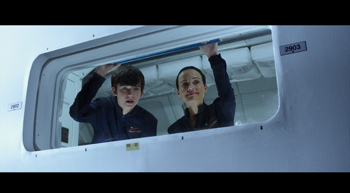 ary Oldman
ary Oldman
Legendary Oscar®-nominated actor Gary Oldman plays the pivotal role of Nathaniel Shepherd, the revolutionary founder of Genesis Space Technologies, the private aerospace company that is seeking to establish human life on Mars. Gary Oldman's character - an innovator, inventor, dreamer, thought-leader, and radical visionary - was modelled after admirable modern minds like Steve Jobs, Elon Musk, and Richard Branson. And like those contemporary business leaders, he occasionally has to make some very difficult decisions, and for Shepherd, one of which ends up altering his whole life. Gary Oldman also imbues the character with a combination of zeal for his visionary ideas and torment for what he has done to a young Gardner. 'Gary Oldman is one of the great actors who often plays antagonists and difficult characters, and this part is unlike anything I've ever seen him in," says Richard Barton Lewis. 'Nathaniel comes off right from the beginning as incredibly charismatic, larger than life – a true leader and true pioneer. He's a man that controls everything down to the nano-detail in his life, but the one thing he can't control is his own passion. His ambition is so overwhelming that he can't let the situation of Gardner being born and raised on Mars interfere with his vision."
When Gary Oldman read the script he says that what really stood out to him were the themes of love and loss. 'My character is a man with a singularity of vision, an obsession, a passion, this drive, like a businessman-scientist-entrepreneur who fulfills this passion and this ambition only then to be thwarted and presented with an even greater challenge which is with the young boy, Gardner." Gary Oldman says he was not only very touched by the story, but the character of Nathaniel Shepherd presented a departure for him. 'I get to play someone who doesn't have all this makeup or scars," Gary Oldman notes, referencing some of his more memorable roles like Sirius Black or even Dracula. 'I guess you could say, physically, it's the closest to Gary Oldman that I've ever played."
Gary Oldman, who has played memorable roles in film and in theatre, including some of the highest-grossing film franchises in history such as the 'Harry Potter" and 'The Dark Knight" series, says that he has known director Peter Chelsom for over 25 years, since Peter Chelsom's pre-director days when he, too, was an actor and the two would frequently cross paths at the Royal Court Theatre in London. With 'The Space Between Us" they were both glad to finally have an opportunity to work together. 'He's not your run-of-the-mill typical British director," Gary Oldman observes. 'He's got a sort of quirky, odd touch." Oldman notes that he really responded to the film's story. 'I thought it was a sweet, entertaining and lovely story that had a great message, and I think Peter Chelsom served it well."
'I think Nathaniel is searching for redemption," notes Loeb. 'Nathaniel feels very guilty throughout the film and feels terrible that his mistake created this loneliness and this disconnect for Gardner."
To prepare for the role Oldman went on a tour of the Hawthorne, California headquarters of Elon Musk's aerospace company, SpaceX, where he had an opportunity to speak with some of the engineers. One of them, a former NASA mission flight controller, gave him some insight that helped influence his character. 'The guy told me that Elon Musk sets the bar very high and he is constantly asking you to do things that are impossible," the actor recalls. 'The people that work there – most of whom are under 35 - are constantly challenged. Elon Musk has these incredible, crazy ideas, but he'll say just go away and make it work. And that's what Nathaniel is like. You have to drive people very hard. You have to have your foot on the gas the whole time. You're constantly challenging people and pushing people." Gary Oldman is quick to say that he was not doing an impersonation of Elon Musk, but rather he was inspired by his essence. 'That pioneering spirit of just pushing the envelope."
Peter Chelsom had already been to SpaceX and emphasised the importance of the visit to Gary Oldman. 'Obviously, I strongly recommended Gary Oldman go there, but what I wanted him to witness was how consumed he would feel by the power of one man's conviction. On the one hand, SpaceX is the height of sophistication, but on the other hand it looks like my ten-year-old son drew a rocket factory!" Continues Peter Chelsom, 'It's a strong case for pragmatic functionality. You get the feeling that this place is the result of endless battles against the -nay-sayers'. Elon Musk is doing what they said could not be done. They're making rockets in one corner and a few feet away there's a coffee shop. Then an employee goes by on a skateboard! There are no sharp men with pens in their top pockets in this world, none of the old clichés."
Gary Oldman says that when we first meet Nathaniel Shepherd, Chelsom wanted him to portray the youthfulness, the drive, and the energy of someone that could run Genesis. But then, 16 years later, after the tragic loss of astronaut and mission head Sarah Elliot when she gives birth on Mars – an incident that represents one of his biggest personal and professional failures, as well as his fateful decision to keep her son's birth a secret - we discover that he is a changed man. Gary Oldman explains, 'I've stepped back from the company, not only taking a backseat or becoming more reclusive, but the strain of keeping the secret of Gardner has taken its toll on me. And it's only when they start discussing bringing him back that it reignites the old fight in Nathaniel."
Once back on Earth, while Gardner is searching for his father, Nathaniel, too, is on his own personal journey. 'Nathaniel is as lonely and as isolated as Gardner, and so is Kendra," Gary Oldman explains. 'So the three of them sort of find each other. And of course, Tulsa, who is the girl who was abandoned and brought up in a foster home. So we're all searching for it…connection, love, the essence of being human."
Says Peter Chelsom, 'Gary Oldman and I have been trying to work together for over twenty years. It was fun to see him in a role where he was not playing a massive stretch to a character. He has such natural charm and sense of fun. What was interesting to see was how equally scary it could be not having a strong character to hang on to, or to escape into. Yes, at times, Gary Oldman is playing very large parts of Gary Oldman, the Gary Oldman his friends know. I wanted to see that in Nathaniel."
Carla Gugino
The filmmakers chose film, television, and stage actress Carla Gugino, for the character of Genesis mission engineer Kendra Wyndham. The producers needed a versatile actress who could convey the intelligence, strength, athleticism, and vulnerability of the character, who along with her scientific role on Mars serves as a de-facto mother figure for Gardner after his birth-mother dies soon after he is born on Mars. Carla Gugino recently starred opposite Dwayne Johnson in 'San Andreas" and is also known for the roles in Robert Rodriguez's 'Spy Kids" series and her television roles in 'Entourage" and 'Wayward Pines."
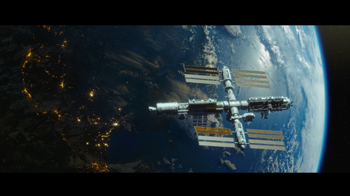 'I was absolutely riveted from the start," Carla Gugino says about when she first read the script. 'It was epic in scope and I strongly connected with the notion of people looking for their place in the world. And the relationship between Kendra and Gardner is so unique. She's not his mother but yet she really cares for him. They have almost this sibling-like relationship yet there's a mother-son dynamic." Athletic and tough, Kendra has a soft spot for Gardner, allowing him"against the rules"to have an interstellar pen pal with a girl in Colorado.
'I was absolutely riveted from the start," Carla Gugino says about when she first read the script. 'It was epic in scope and I strongly connected with the notion of people looking for their place in the world. And the relationship between Kendra and Gardner is so unique. She's not his mother but yet she really cares for him. They have almost this sibling-like relationship yet there's a mother-son dynamic." Athletic and tough, Kendra has a soft spot for Gardner, allowing him"against the rules"to have an interstellar pen pal with a girl in Colorado.
In Kendra's backstory, we learn that she was once married, but her relationship was destroyed because she couldn't have kids of her own, so in going to Mars she's also fleeing that past. Carla Gugino continues, 'It was hurtful enough that she was like, -I'm ready to be off this planet. Let's go to Mars!' She's really getting away from all that, but the irony of it is that she ends up becoming a mother unbeknownst to herself. She realises that she has one of the richest relationships of her life with Gardner. And she comes to the realisation that she's been a mother for like six years to this kid. She's the mother he never had."
What immediately interested the actress about her character was how dynamic Kendra's storyline is, and especially how she's a woman very comfortable with the isolation of being on Mars. 'I was really intrigued at the fact that she has gained this sense of self and power being away from the world," Carla Gugino says. 'And that ultimately she's going to be in a place where she really is in her heart of hearts this kind of mama bear for Gardner, and she's going to fight tooth and nail to get him to have this opportunity to live his life on Earth and to live the life of a normal boy as much as he can. And in doing so she's going to sacrifice what she has gained, which is this kind of freedom on Mars. She's going to have to go back to Earth; a place she ran away from everything she was not good at and go back into the fire because she loves this kid so much."
Bd Wong
Although Nathaniel Shepherd is the founder and visionary leader of Genesis Space Technologies, its director, Tom Chen, played by Bd Wong, runs the business side of the company and is frequently its voice of reason. 'If it was the theater, Nathaniel would be the artistic director and I would be the managing director," says the actor, who first gained acclaim and a Tony award for his performance on stage as -Song Liling' in 'M. Butterfly," and has gone on to star on the television series 'Law & Order: Special Victims Unit" and recently the films 'Jurassic World" and 'Focus."
Bd Wong says he was drawn to the role for the opportunity to be a part of a great cast and because he was fascinated with the premise and science behind the film. 'First, I really wanted to work with Gary Oldman probably for my whole career," he enthuses. 'And the movie offered me an opportunity to play a certain kind of part that isn't always available to me – kind of a quasi-antagonist. Tom Chen is a person who is very direct and is very straight up."
Even with all the space travel and futuristic scenes on Mars, Wong says that the film doesn't have the vibe of a science fiction movie. 'You think when you hear -The Space Between Us' and -Mars' that you're going to get this kind of 'Gravity" space-type movie, but it's really about the relationship between a young man and a young woman, except that he's from Mars and she's from Earth," he says. 'That's the twist to that teenage romance. It has the humour and the sweetness of a movie that takes place only on Earth, while also being set on Mars. So I think that gives it a kind of genre unto itself – something for science fans but also in a setting that's very human. At the core of it there's real heart, a real sense of relationship which is much more than your average space movie."
Bd Wong was particularly fascinated with the science of the film, particularly relating to Gardner's physical struggles on Earth after spending 16 years on Mars. 'There was a lot of research put into this movie, and one of the things I've learned is what can happen to a baby when it's born on Mars," BD Wong relates. 'You can't just have a baby on Mars and expect that everything's going to be okay, because of gravity and pressure and all of these things that takes a toll on a person's body, and heart, and circulatory system, get thrown way up in the air."
He continues: 'There are really fun, fish-out-of-water questions that are laced within this movie with a lot of science and facts and things that are very fascinating. Gardner is having his own emotional journey of wanting to interact with human beings. He's a human being living in a completely solitary existence. He's fascinated by civilisation. He's fascinated by culture. He's fascinated by Earth itself and this young woman he wants to be with. And so his journey is one of a teenager with determination trying to see this thing through, while people are saying no to him or telling him what can or can't happen."
Janet Montgomery
British actress Janet Montgomery, who stars as -Mary Sibley' on the popular WGN television series 'Salem," and opposite Natalie Portman in the film 'Black Swan," plays Sarah Elliot, the chief astronaut aboard the Genesis Magellan-61 spacecraft who dies while giving birth to her son, Gardner, shortly after arriving on Mars. Montgomery was attracted to the idea of getting to realise her childhood desire to be an astronaut, and although she only worked a few days on the film, her character has to run a physical and emotional gauntlet. 'I had to give birth, have a seizure, and die," she laughs. To prepare for the role, Janet Montgomery watched several space documentaries, 'but the thing I found most useful," she adds, 'was -The Right Stuff.' It was great for helping me with the take-off, and that movie was so well done and gave me an understanding of what being an astronaut is all about."
The Science
'The Space Between Us" is set in the very near future, so the filmmakers wanted to make sure that the culture and technology represented in this future world were still very familiar to people living today. 'This is not a fantasy movie like -Star Wars' or science fiction like -Star Trek' - there are no flying cars" Richard Barton Lewis explains. 'If you look back eighteen years ago from today the world's not very different. There were computers and now they're a little more advanced. I'm still driving a car like my grandfather drove in 1916, which was hundred years ago. So what we're postulating is that the world's not that different." Richard Barton Lewis says that there are some nods to the future, such as more electric cars and self-driving cars, but they're very grounded into the story.
Although the voyage of humans to colonize Mars has not yet occurred, the science and plans to achieve this tremendous feat have long been under way. The filmmakers had contact with a bevy of scientists and specialists in space exploration to gather the ideas, science and technology to utilise in the film.
To consult with the filmmakers regarding the compelling science of space exploration and human colonization of Mars depicted in the film, they turned to a leading authority in the field, Professor G. Scott Hubbard, from the Department of Aeronautics and Astronautics at Stanford, who also served 20 years at NASA where he was the Director of the Ames Research Center and was appointed NASA's first 'Mars Czar." As part of the National Academy of Sciences' Science and Entertainment Exchange program that strives to keep Hollywood as realistic as possible in the depiction of science in films, Hubbard was brought in to advise on the film's scientific accuracy. 'I read the script numerous times," Hubbard relates, "and along with it being a marvellous story, the things that would happen to the young boy are completely believable. [Peter Chelsom], and [Richard Barton Lewis] were absolutely committed to being as authentic and realistic as possible in covering all the things about Mars." Over the course of the film's development, Scott Hubbard says he provided a whole host of suggestions to the writers dealing with gravity, reduced gravity, and what the Mars landscapes would look like, as well as introducing them to a network of people on the NASA team. He also worked closely with the filmmakers to provide them with NASA film footage as well as access to a Suborbital vehicle.
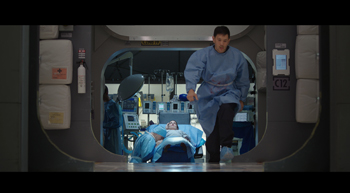 'I love research" says Peter Chelsom, 'in fact I feel like a complete fraud if I haven't done my homework. What's always interesting is how research and being authentic actually tend not to limit you as a film maker: the opposite is often true. The film just gets richer because of it and so many writing and directing ideas come from that work. Scott Hubbard was the perfect balance of accuracy and a sense of what mattered in film-making, where we could take license."
'I love research" says Peter Chelsom, 'in fact I feel like a complete fraud if I haven't done my homework. What's always interesting is how research and being authentic actually tend not to limit you as a film maker: the opposite is often true. The film just gets richer because of it and so many writing and directing ideas come from that work. Scott Hubbard was the perfect balance of accuracy and a sense of what mattered in film-making, where we could take license."
The Science: Biology Lessons
Scott Hubbard, who conceived the Mars Pathfinder mission and was the manager for NASA's highly successful Lunar Prospector Mission, had to utilise many facts about Mars and its relation to Earth to properly advise on the film's science. 'Mars is 20 about half the diameter of Earth, and it therefore has about three-eighths of Earth's gravity," Hubbard explains. 'That means that if you were strong on Earth, you could be even stronger for a while on Mars. And the mission in the film, which is in the relatively near future, would take anywhere from six months to nine or ten months to get there – depending where you launch. Also, being in reduced gravity, as far as we know today, would have a dramatic effect on a young child that had not fully developed and would probably result in enlarged or altered internal organs, and a different bone structure. We know when astronauts go to the International Space Station or a shuttle that they have lost muscle mass. They have lost bone density. But if someone were to grow up in that environment, it would probably result in a lot of physiological changes that were more or less primitive."
In addition to the technological details of a manned mission to Mars, the science of space travel also has biological effects - on the astronauts as well as Gardner, whose 16 years on the Red Planet has left his body woefully unsuited to Earth's atmosphere. Martian gravity is about one third of Earth, which means that when he returns to Earth, Gardner Elliot feels like he weighs the equivalent of 300 pounds. Although Gardner and the other scientists in East Texas, Mars, have a fitness regimen to keep their muscles strong for the inevitable return to Earth, for Gardner the clock is ticking. 'The ticking clock is Earth's powerful gravity compared to what he grew up with," explains Scott Hubbard. 'He's able to tough it out and he's prepared for it, but gradually that inexorable force of gravity takes its toll and his heart starts to give out. His ability to survive between one gravity of Earth compared to the three-eighths gravity of Mars just wears him out."
Scott Hubbard notes that NASA has done some work on this possibility for which he provided consulting. 'Mice have been born in micro gravity for shuttle missions and they showed a series of anomalies. And those changes are part of what was put into the script that this young boy would experience from having been a fetus during the travel and then growing up in one-third of Earth's gravity."
Explains Chelsom, 'Some Mars/Moon movies seem to ignore the gravity difference. I felt we couldn't, not least because gravity is a plot point to our story. It is a main ingredient in Gardner's struggle and the danger of his mission. I wanted to use the wires and harnesses on the actors not just when they were in outer space at zero gravity, but also on Mars where any fast or sharp movement would surely look different. It was time consuming but it paid off."
The Science: Quantum Entanglement
Another technological complication to which Scott Hubbard helped find a solution was the real-time communication between Gardner and Tulsa who are separated by over 100 million miles. 'At that distance, it can take 10 minutes for a signal to go one way, or 20 minutes round trip," Scott Hubbard offers. 'You can't carry out interactive conversation on email that way, but I was able to give the director and producer a principle from quantum mechanics that they could invoke." The idea, Scott Hubbard says, is based on the theory of a physical phenomenon known as Quantum Entanglement. 'The idea, which has been tested and demonstrated, says that some future scientist or technology may be able to find a way to send a signal faster than the speed of light, probably actually going through different dimensions. The whole notion is very plausible. Whether it would be 20 years or 50 years, who knows? But it's a way of moving the story ahead so they can have this rapid interchange."
About The Production
To help Peter Chelsom realise his vision for Gardner's epic journey, a talented pool of filmmakers was assembled, including Director of Photography Barry Peterson, Production Designer Kirk M. Petruccelli, and Costume Designer Christopher Lawrence.
The production of 'The Space Between Us" was primarily based in and around Albuquerque, New Mexico, the picturesque Southwestern city that contained all the visual elements – city life, mountains, lush greenery, deserts – that could double for the environments in Gardner's epic cross-country quest to learn the truth about his biological father, a road trip that begins at the Kennedy Space Center in Florida and eventually takes him through Colorado, New Mexico, Arizona, and Nevada, and finally to a beachfront home in Summerland, California.
With 340 days of sunshine per year, Albuquerque provided the ideal base for exterior filming. 'We had the great opportunity of working in the state of New Mexico," relates Kirk M. Petruccelli. 'There are beautiful landscapes where we had to create a variety of things, because our story happens from Colorado through New Mexico, Arizona, into California – as well as on Mars. So we had to capture all those things in the 30 mile geography of the Albuquerque area." Additionally, at the end of the schedule there would be three additional days in Malibu, CA and Las Vegas, NV.
While in Albuquerque, the production employed at least 100 New Mexico crew and approximately 30 New Mexico principal actors and an estimated 1,000 local background talent. The city has been a popular setting for many films and television shows, among them 'Breaking Bad," and more recently 'Sicario" and 'Independence Day: Resurgence." Over the course of eight weeks, 'The Space Between Us" utilized several of Albuquerque's most iconic locations including the University of New Mexico, Albuquerque Convention Center, and Kirtland Air Force base, among many others.
Principal photography commenced September 16, 2016 at Spaceport America, the first purpose-built, commercial spaceport in the world located in the high desert of Sierra County, New Mexico, 180 miles south of Albuquerque. This marked the first time a movie has been filmed at the $218 million LEED Gold-certified state of the art launch complex, designed by renowned architect Norman Foster, and situated on 18,000 acres adjacent to the U.S. Army White Sands Missile Range in southern New Mexico, where, as part of its role in the burgeoning space tourism industry, it's host to two of the most respected companies in the commercial space industry: Virgin Galactic and SpaceX.
At Spaceport America, which was just completed in 2014, the Genesis Space Technologies conference room was filmed in the Virgin Galactic Celebration Area, an astronaut lounge in Virgin Galactic's 110,00 square foot Gateway to Space Building. The Terminal Hangar of that building also served as the Kennedy Space Center auditorium where Nathaniel Shepherd gives a speech on his vision of space travel and Mars colonization.
The Production: Creating The Netherworld
With a film set in two worlds – that of space and Earth – Director of Photography Peterson had to utilise distinct visual styles to set them apart while keeping the whole consistent. Peterson marks his first feature film collaboration with Peter Chelsom, although he has worked with the director on several commercials over the years. The cinematographer, who is renowned for his work on comedies including the '21 Jump Street" films, was eager to jump back into more of a science and science fiction based film, something he explored years earlier with the teleportation adventure 'Jumper." 'What intrigues me about science fiction is the netherworld of it all," Peterson says. 'You get to go to other places and create other worlds, with different lighting scenarios that you don't necessarily have on Earth. You get to deal with non-gravity situations, gravity situations, and the violence of outer space." Peterson says he watched hours and hours of footage of astronauts in outer space to gain inspiration for the film's space sequences, as well as consulting with some of the experts that visited the set, including Hubbard.
When Peterson and Peter Chelsom began discussing the overall look for the film they decided they wanted it to look epic. 'We wanted big images; big beautiful pictures," Peterson recalls." We wanted realism, but we also didn't mind dangling a little bit of fantasy in there too. He notes that the epic scope he and Peter Chelsom were hoping to achieve was bolstered by the New Mexico sky and landscape. 'New Mexico is an incredible place to shoot," he notes.
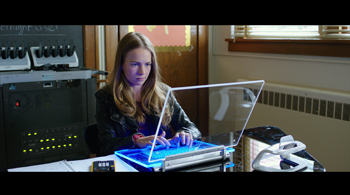 'You get everything from the mountains to flat desert areas to cities – pretty much everything." Settings that were more site specific and iconic were shot by a second unit crew under the direction of Second Unit Director and Co-Producer John Albanis, at various locations including Grand Canyon National Park in Arizona.
'You get everything from the mountains to flat desert areas to cities – pretty much everything." Settings that were more site specific and iconic were shot by a second unit crew under the direction of Second Unit Director and Co-Producer John Albanis, at various locations including Grand Canyon National Park in Arizona.
For the exterior scenes set on Mars, Peterson toned everything red because the atmosphere on the fourth planet from the Sun is primarily red, intensified by the red rock of its surface. Peterson says, 'Earth, on the other hand, because it's being seen through the eyes of somebody seeing Earth for the first time, we thought we'd do the other end of the spectrum: we polarized skies, we saturated colours, we played with the beauty of Earth, as if it's the first time anyone's ever seen it."
The Production: Utilizing The Latest Technologies
To visually transform the director's vision to the screen, Peterson collaborated closely with Petruccelli, who is no stranger to films infused with science and technology, having worked for years on visually rich superhero films such as 'Blade," 'Lara Croft: Tomb Raider," 'Ghost Rider," '4: Rise of the Silver Surfer" and 'The Incredible Hulk," to name a few. Early on, the designer sat down with Peter Chelsom, Peterson and the creative department heads to brainstorm the modestly-budgeted film's creative and tactical decisions – especially knowing they had less than eight weeks to infuse the film with the epic scope illustrated in the screenplay. 'It was a lot of moving parts," the designer recalls. 'It's a very big story dressed in a very small budget. So we had to be really careful and strategic how we did it, but at the same time capture the lovely, beautiful story at its core."
Peter Chelsom loves working with CGI, especially if it's -invisible'. 'I think the last thing you want an audience to say is -wow, that's great CGI'. I think you've lost them at that point. My approach is always about it being so well integrated that you never see the -joins'. I don't just mean this literally." Peter Chelsom continues, 'For example, I would often say to our superb CGI company Rodeo, -where could a real camera feasibly be in this sequence?' Let's start with the goal that the CGI should never be noticeable, that we got lucky and caught it ourselves. Also, I think it's vital wherever possible to give the actor as much reality in their vicinity and not just place them in a totally CGI environment. All of it feeds the ultimate reality experience the audience will have. It's all about credibility."
According to Petruccelli, his whole task was to make the future depicted in the film appear realistic. To achieve that, he says that the source that helped him the most were the scientists he met at NASA, with whom he spoke about both the technologies that exist today and plans that are being made for tomorrow. 'These are the most extraordinary people to talk to, and they were very excited to be part of it," the designer says. In those talks, what he was trying to discern was the point of future possibilities in the aerospace and Mars programs.
Muses Peter Chelsom, 'I know this sounds weird, but when I found out we had only 38 days of principal photography, I sat down and watched Million Dollar Baby. Clint Eastwood is known for shooting films in very few days and that was no exception. Also rumour has it that he goes home at 4pm! The point is, fewer days means fewer camera set ups. A different camera style is imposed, you cut less, you linger more. And it can really work well when you want an audience to relish a landscape or a space shot. It makes you more decisive."
The Production: Envisioning The Near Future
During pre-production, the filmmakers visited several space facilities including SpaceX in Hawthorne, California, to get ideas and discover the latest and conceptual technologies powering the space programs. Elon Musk, the CEO of SpaceX, himself has been outspoken about his desire to create a Mars colony. Several of the visionary ideas Musk and others have put forth regarding exploring and inhabiting Mars served as inspiration to the writers when fashioning the film's story, and were also very useful to the film's art department in creating the film's spacecraft technology and the Mars colony.
In creating the film's near-future setting, Petruccelli was very cognizant of the fact that technology doesn't change that fast, so the future depicted in the film would have to be very subtle. He notes, 'The most challenging aspect of the movie is that it happens -tomorrow' and then 16 years from tomorrow. So it's not as if we're flying cars around. We have a very delicate balance with what is perceived as futuristic or not. Cars still exist from the 90's, but they're 16 year-old cars. We can go a little bit farther, we can go into a future concept, but what we tried to do is make sure that every element of the storyline doesn't pull you out of the story. So we aimed for very subtle, understated things. Are we a paperless culture or do we have paper? Where do we think we're going to be in the next 20 years?"
The filmmakers worked closely with automobile company Volvo, who provided the self-driving cars that Nathaniel Shepherd rides in. As a film set both in the very near future, and 16 years later, the filmmakers wanted to feature technology that would feel authentic in the years to come. A way they accomplished this goal is with the cars that Nathaniel Shepherd drives during the two time periods. The two vehicles include a prototype 2016 XC90 with the front seats removed and a large pop-up video screen in the lounge console, and a self-driving S90 sedan, a concept car shipped directly from Volvo headquarters in Sweden. Adds Peter Chelsom: 'I've cast Volvos in my last four films. I drive a Volvo. Coincidence? I don't think so!"
The Production: What Do Teenagers Wear In Space?
Much care went into the design of the film's costumes, from the characters' civilian clothing to the space suits worn during space voyages and on Mars. Costume Designer Christopher Lawrence, who previously worked with Peter Chelsom on other films and the first three seasons of the Showtime series 'Ray Donovan," designed the wardrobe for the film. 'The look of this film will surprise people," Christopher Lawrence suggests, 'because even though we are in the future, the story is not really about futurism or the state of the world in sixteen or eighteen years. It's really a love story. At first I thought I was going to be doing futuristic costume when really it turned out what I needed to do were costumes that supported the story." Christopher Lawrence explains that sixteen years from now he doesn't believe people will dress that differently, so he didn't have to get too far out with the film's fashion.
Prior to filming Christopher Lawrence joined his fellow filmmakers on their field trip to Musk's SpaceX company in Hawthorne, California, where he got the opportunity to see and speak with their experts to obtain a good foundation for what space travellers wear now and might wear in the future. 'They showed us what astronauts are currently wearing, or what they would be wearing when they do get to Mars," Christopher Lawrence recalls. 'And they showed us what Elon Musk wishes they would look like. So then I took those concepts and used them as my springboard for what we do in this film.
So what they wear on Mars is pretty close to what they actually do wear, and what they wear when they travel back and forth between Mars and Earth, that is what Elon Musk hopes they will be wearing in the future."
Christopher Lawrence explains that the film and his costumes possess a very strong color palette, with big differences between Mars and Earth. 'East Texas, Mars is more streamlined – that ended up being blacks and charcoal grays, and some silvers and blues, like a NASA blue," he says. This minimalism in colour and style allowed Lawrence to create his own visual language with the costumes within the neutral world that the set provided. 'Then when we get to Earth we really wanted to show that Gardner has had a very limited view of this world, so when gets there – especially to the high school – we wanted the world to be more colourful through his eyes. When he gets to Earth we pump it up a little bit brighter, but not at a distracting level, just that the world has gotten a little brighter now that Gardner is in it."
For Gardner's attire, Christopher Lawrence explains that once Gardner arrives on Earth, escapes from the authorities and heads out to find Tulsa, that he doesn't have any money and knows nothing about shopping. 'He doesn't know about shopping in stores really," Christopher Lawrence conveys. 'He's seen it in movies and television, but he ends up having to steal clothes from somebody, which don't fit him properly. He finds them in a scientist's locker. It's a look that we first see on an older gentleman and then it goes on to Gardner. And since Asa Butterfield, who was 18 during filming, plays Gardner, it turns out to be a little odd, but also really great looking. It almost looks like a Milan runway. Once Gardner meets up with Tulsa she helps him look a little bit like a normal person by buying him clothes that are a little more age appropriate."
Christopher Lawrence says that for the character of Tulsa, he wanted to show that as a foster child, Tulsa doesn't have a lot so she's held onto her clothes for a long time. 'They're pieces that hopefully have some history," Christopher Lawrence says. Some pieces, he notes, actually belonged to the actress, so she would have her own personal history with them. 'Overall we just wanted to make her very real, very approachable, but somebody that girls would like and boys would like." Christopher Lawrence explains, however, that Tulsa really doesn't care about who does and doesn't like her, which he thinks is defined in her clothes. He notes, 'It's tough when a girl is on the page as a tomboy and comes from broken homes, but she's still a girl, and there's a vulnerability to her toughness."
The Production: Defying Gravity
Prior to filming, all four lead actors – Gary Oldman, Asa Butterfield, Carla Gugino, and Britt Robertson – participated in multiple stunt rehearsal sessions with the film's stunt team for the various wire harness work, which would be utilized in the zero gravity space flight sequences. 'First we put up some basic flying rigs just to see how they all reacted to the harnesses we were using," Croughwell recalls of those training sessions to help get the actors prepared for the complex balanced harness systems. 'All of the actors were awesome on the wires. They've obviously done a lot of it before. It was never an issue putting them in harnesses on the fly rig, which is surprising because they're uncomfortable. They're tight, they're restrictive." For research into weightlessness, Croughwell, whose recent credits include 'Dawn of the Planet of the Apes" and the upcoming 'Geostorm," watched real NASA footage from the space shuttle. 'This is how they really move and if you can find little pieces in there, the little nuances that you can add, it makes it a little different than what everybody else has done and makes it more believable."
Coordinating the flying rigs with the camera department required a lot of coordination between the camera and stunt teams. As Croughwell explains it, usually a camera films at twenty-four frames per second and the stunt people float the actors at a speed consistent with the amount of gravity that would be in a particular space at that time. However, with 'The Space Between Us," Peter Chelsom decided to combine speed changes in the camera during the same shot. Croughwell, continues, 'It was a real dance between the camera department and the speed they're shooting it and how we're flying. We had to do a lot of real fine manipulation of the actors. It's almost like puppeteering in some ways, like having a marionette on the end of a string."
According to Peterson, there were different techniques used to simulate reduced or zero gravity. 'We achieved the feeling of weightlessness two different ways," Peterson states. 'On Mars we did it with frame rates - slowing cameras down a little bit makes people look like they're hanging in the air a little bit longer, so it's just a little bit off and makes you feel like they're flying through the air a little bit. When we got into outer space, most of that was cable work, where we had people in actual flying harnesses, á la Cirque du Soleil." Visual Effects Supervisor Robert Bock, and his VFX team from Canada's acclaimed Rodeo FX, were responsible for creating most of the film's Mars and space exteriors, as well as for completing the wire removal for the zero gravity flying sequences.
Per Peter Chelsom, 'It is really really hard work for actors to be in harnesses and wires. It is amazing how much they are using muscles to look like they are not bound by gravity. Sometimes it's painful!"
The Production: Building East Texas, Mars
The film's production offices and stages were located at the campus of I-25 Studios, a 200,000 square foot former Philips Semiconductor manufacturing facility in Albuquerque that was renovated into a multi-stage production complex.
Inside I-25's 26,200 square foot Stage C, Petruccelli and his team designed and built the series of interconnecting, modular bubbles and geodesic domes that comprise the Mars settlement known as East Texas, Mars. Situated on the red planet's desert floor, the colony consists of various corridors, storage facilities, ventilation systems, water manufacturing plant, workout facility and living quarters where Gardner Elliot resides for the first sixteen years of his life along with the scientists that are stationed there. 'The Mars sets were based on modular construction," Petruccelli says. 'It had repetitive form with white on white colours and simple fluorescent light fixtures. These are very simple basic shapes that you could then attach technology to and incorporate in and live there."
Since we see moments of Gardner's upbringing in East Texas over the course of 16 years, Petruccelli needed to have a set that allowed for possible growth. 'It's not like you're going to create a city overnight, but you are going to create two or three hubs that connect to an artery that gets you from one extension to the next. Also, botany's important. Habitat living is important. And all these things are modular, which means you could reuse it and recycle it. So we changed each one of these hallways and rooms into yet another because that's what they would do. So through smoke and mirrors we were able to create a pretty diverse set of living conditions and working conditions in East Texas."
Working within the confines of a modest budget, the production designer would repurpose each set into new sets immediately once each set was shot out. The East Texas fitness room became an auditorium, Gardner's living quarters became Kendra's quarters, and so on. According to the designer, the organic colors, shapes, and light of Earth would set off the minimalism of the inorganic living environment of Mars. 'On Earth everything is completely different," he says. 'Terrestrial colors are earthen colours; things of nature. Every choice was made to make sure that we are very aware how important Earth is to the story and to the characters. There is a lot of power in Earth's natural landscape. In comparison with Mars, it gives you this collision of differences."
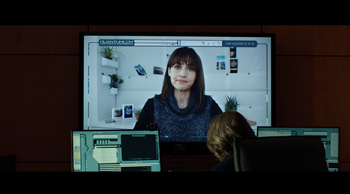 The Production: Three Weeks To Build A Robot
The Production: Three Weeks To Build A Robot
To help create Centaur, the four-and-a-half-foot tall half-human, half-robot "robonaut" who acts as Gardner's friend in East Texas, the production designer stayed local, enlisting the expertise of Dr. Donald Davis, the Assistant Professor of Applied Technologies and Applied Technologies Program Chair at the University of New Mexico Los Alamos Robotics Department. As Petruccelli envisioned it, Centaur should possess the upper torso of a humanoid male with the body of a miniature four-wheel rover and speak with an animatronic British voice.
Peter Chelsom is the voice of Centaur, the robot. 'At first it was just easy for me to do the robot. There's no lip synch so I could -re-write' what he said at any time in post-production. His voice just became a given and the studio insisted I keep it, for those who might think it was nepotism!"
Due to a shortened pre-production schedule, Donald Davis and his team would have only three weeks to build the robot. 'The biggest challenge of the whole project was to come up with something that looked really cool and sci-fi with original parts that we had to design and make in about three weeks," Donald Davis says. 'They were looking for a robot with a NASA bare-bones skeletal kind of look that was capable of turning its head and they wanted a track unit on the bottom like a bulldozer has. And instead of just like a gripper they wanted hands on the robot." Over the course of those three intensive weeks, Donald Davis and a select group of his robotics students created the complex remote-controlled machine featuring a humanoid articulating head fitted with GoPro eyes with a chassis that could be raised and lowered to stand between four and five feet. The task involved the ordering, engineering and the 3-D fabricating of dozens of parts - transmitters, receivers, motor controllers – and piecing them all together, ultimately creating the 120-pound machine. During filming, Donald Davis and one of his students were on set controlling the actual movement of the robot.
Also on stage, and with the cooperation of Mark Sirangelo, the head of Sierra Nevada Corporation Space Systems of Colorado, the filmmakers were able to borrow the original mockup of NASA's HL-20 Horizontal Lander, also known as the Dream Chaser, a space vehicle that can hit speeds of Mach 25. Housed for the last two years in the collection of the Wings Over the Rockies Air & Space Museum in Colorado, the circa 1990 space ship developed by NASA's Langley Research Center was brought to I-25 Studios for a day of filming. The ship was originally designed as a rescue vehicle that could be stationed at the International Space Station. Mark Sirangelo says, 'The Dream Chaser is doing something in the movie that was its original purpose: to rescue or help sick people."
The Production: Second Unit Locations
While a second unit crew filmed the establishing exteriors of Arizona's famed Grand Canyon, the more intimate scenes with Gardner and Tulsa were actually filmed at the To'hajiilee Indian Reservation. Television audiences know the scenic Navajo Nation locale as a recurring location on the television series 'Breaking Bad."
The Martian surface and terrain was filmed in a deep rock quarry at cement and concrete company GCC Rio Grande's facility in Tijeras, New Mexico. This is where Gardner takes the rover out for a ride outside his living quarters in East Texas. Peterson digitally enhanced the site with reddish-coppery colors to realistically portray the planet's surface. The rover Gardner drives was actually a modified dune buggy designed by Petruccelli, made to look like it could realistically travel over the rocky terrain of Mars.
The lower level quad of the University of New Mexico's Medical School doubled as the Kennedy Space Center quad where Gardner Elliot sneaks away with a student tour group. The home and adjacent crop dusting field that Tulsa shares with her foster dad, Chuck, was filmed at a private home and ranch in Los Lunas, New Mexico. This was the site of the 43-acre alfalfa field where over two days the filmmakers shot the dramatic crop duster scenes featuring a 1943 Boeing-made Stearman bi-plane. The plane's owner and pilot Alan Hoover – who flew the plane to New Mexico from Iowa for the film - donned a blonde wig and doubled for Britt Robertson for many of the scenes' more complicated flying sequences. Other Albuquerque locations included Highland High School, Kirtland Air Force Base, the Albuquerque Convention Center, Aperture Center, Sam's Club, the circa 1955 drive-in Hurricane's Café, and University of New Mexico, and Central New Mexico Community College.
Once filming was completed in Albuquerque, the cast and crew departed for two days of filming in Malibu, California, where Walt Disney's former a beach house at El Matador Beach doubled for the house where Gardner and Tulsa find the mystery man, played by Colin Egglesfield, who is in the photos with his mother.
11, 2015, in Las Vegas, Nevada, on the Vegas strip just outside Caesar's Palace, where Gardner and Tulsa briefly take in the spectacle of the city during their road trip to California.
Says Peter Chelsom, 'I've worked with my second unit director/co-producer, John Albanis, for about fourteen years. It's so much more than the usual form of second unit, where they do the wides and the director does the close. It's much more integrated than that. John is a film-maker in his own right and I've come to like being surprised by what he does, even if it means I have to change my plan for the other parts of the scene. That is a testament to the confidence I have in his work."
The Space Between Us
Release Date: March 2nd, 2017
Have You Seen This?
MORE


